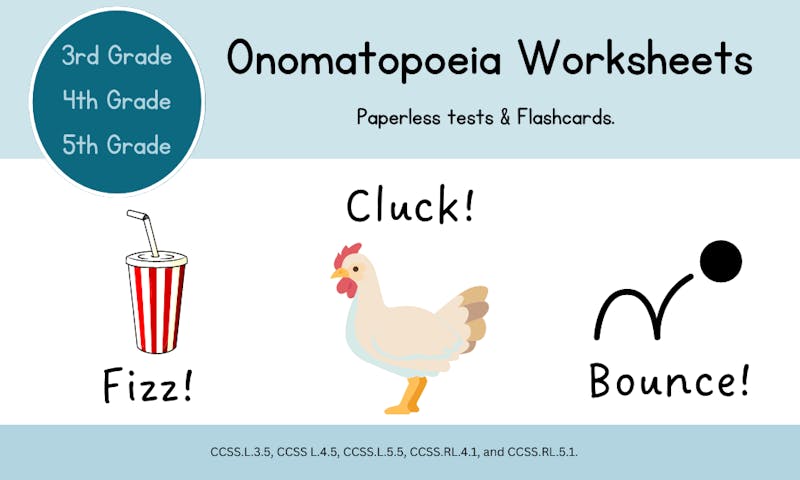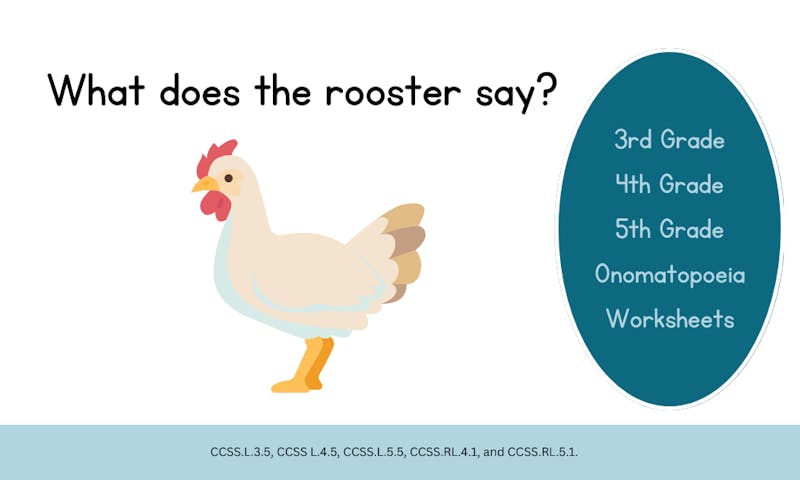These onomatopoeia worksheets for 3rd grade, 4th grade, and 5th grade contain a variety of onomatopoeia activities and examples of onomatopoeia designed for students of grades 3-5 to work on their recognition of sounds, nuances in word meanings, refer to details and make inferences from examples of onomatopoeia in literature, and understanding of figurative language as per the CCSS. Teachers, homeschoolers, and online tutors can use these fantastic resources as part of their lesson plans or digital classroom activities. Expect more than a worksheet with flashcards, quizzes, and slideshow images, and start practicing onomatopoeia with your students.
Easy Peasy Definition of Onomatopoeia with Examples
Before you head into the onomatopoeia worksheets, let’s look at the definition of onomatopoeia with some easy-peasy examples you’ve probably heard of and already use. Want to find out more before you flex your muscles? Head to our onomatopoeia page.
What is onomatopoeia?
What are 5 onomatopoeia examples?
Animal Sounds Paperless Flashcards
Onomatopoeia is a word that describes a type of sound, so what better way to start than with animal sounds? You've probably read a book that contains animal sounds, especially in storybooks. But did you know that languages worldwide have different onomatopoeic sounds for animals than the English language does? Here we're going to focus on the English language, but for curious minds, go ahead and check out our onomatopoeia examples article; it might blow your mind!
In these paperless onomatopoeia flashcards, students will work on recognizing and matching the animal sounds to the onomatopoeia word. These flashcards can also be used to practice recognizing sounds and spelling correspondence, helping students with their spelling and writing skills.
Before you flip the flashcard for the answer, see if you can guess what English sounds or onomatopoeic words these animals make.
Words That Describe Sound Worksheet
Scroll through the pictures and test your knowledge of onomatopoeia with the paperless test below. To move on to the next slide, tap the </> buttons.
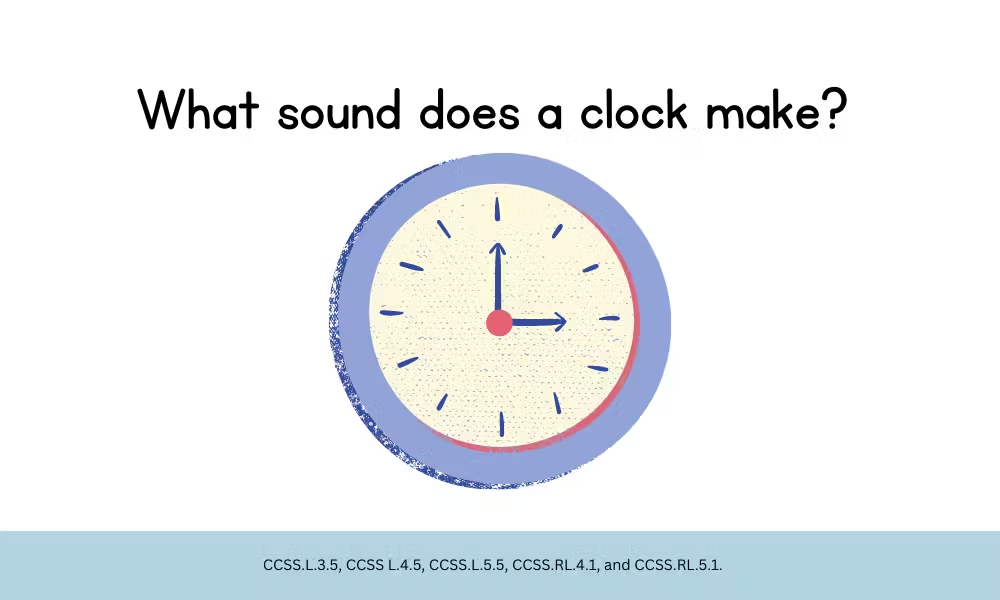




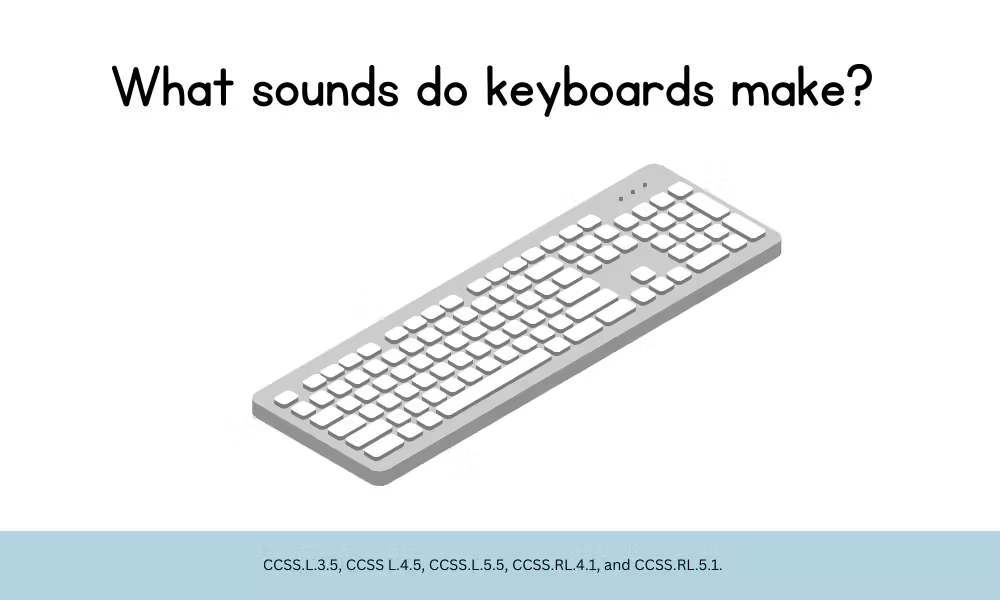

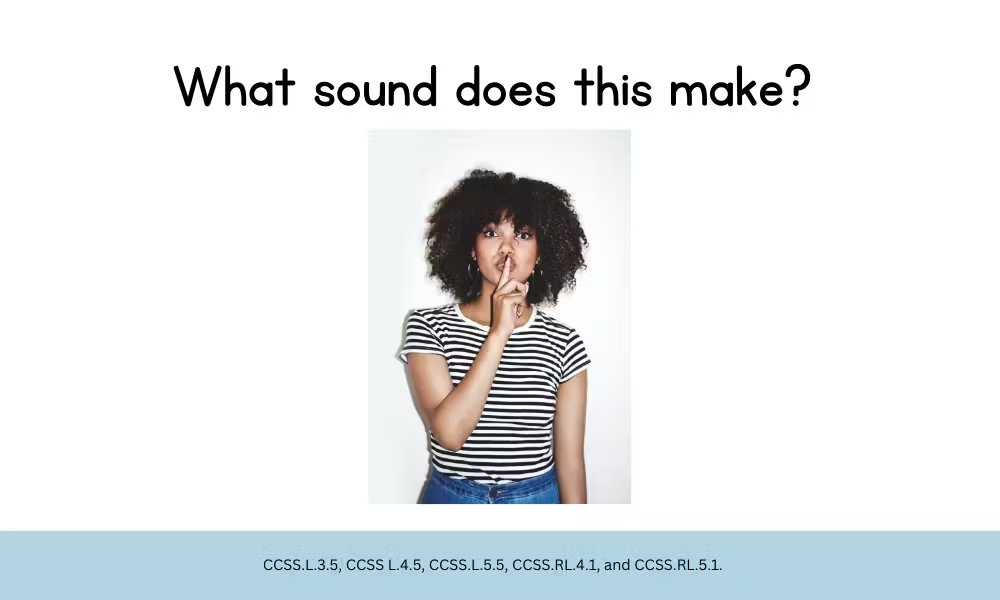


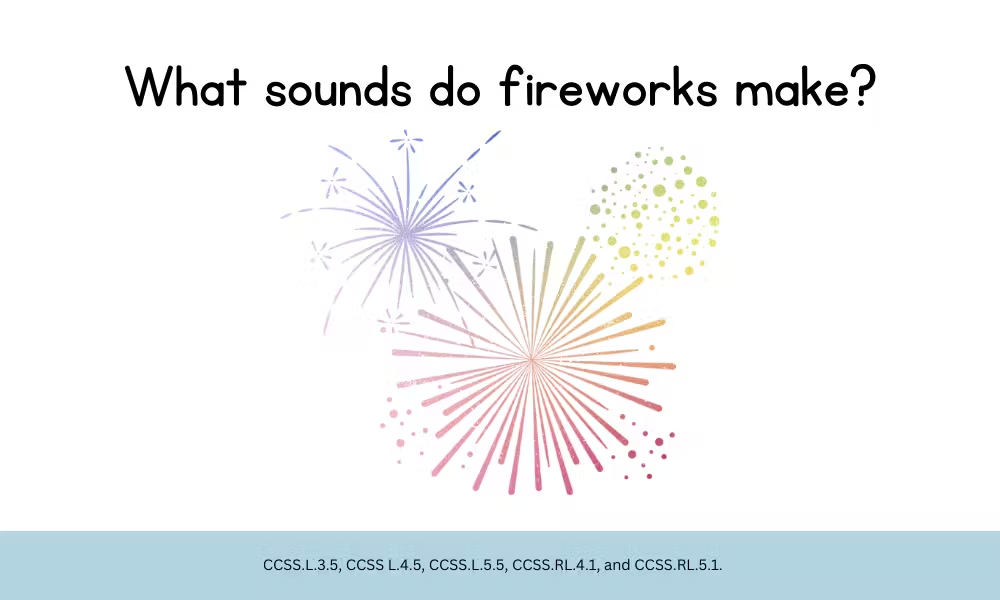
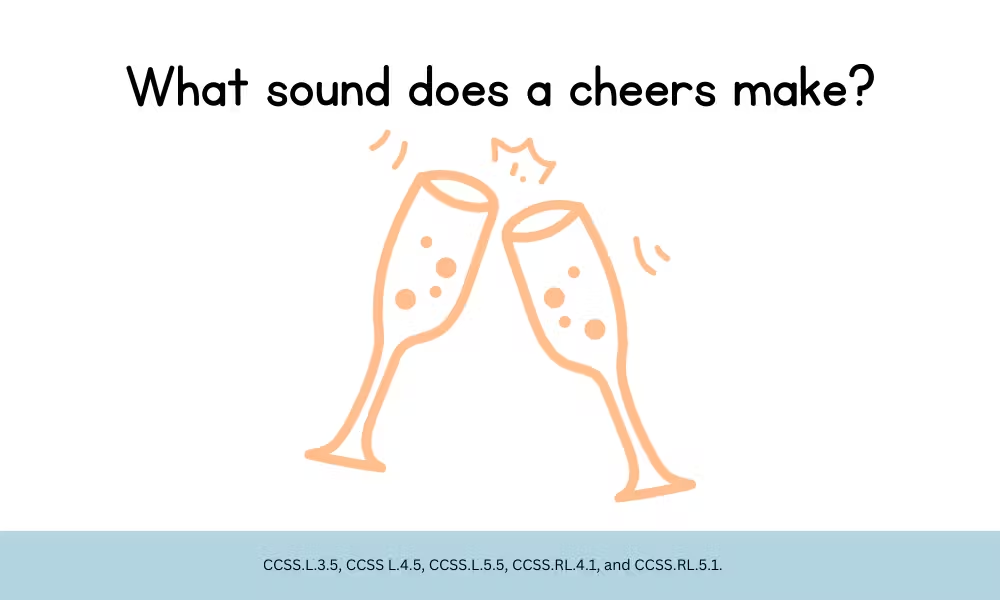
Words That Describe Sounds Quiz
Once you’ve looked at the images, see if you can guess which onomatopoeia word goes with which object. Got a question wrong? Press reset and try again.
1. Clocks go __________.
Choose the best answer from the choices below
2. Which onomatopoeic words go best with the sound of soda?
Choose the best answer from the choices below
3. Sausages in a pan _______.
Choose the best answer from the choices below
4. The fire ________.
Choose the best answer from the choices below
5. My keys move in my pocket. Move is an example of onomatopoeia. True or false?
Choose the best answer from the choices below
6. The sound of my keyboard goes _______.
Choose the best answer from the choices below
7. When I snap my fingers, they go ________.
Choose the best answer from the choices below
8. Fred told his friend to _______ because he wanted to listen to the teacher.
Choose the best answer from the choices below
9. Tommy sneezed and made a huge noise. _________!
Choose the best answer from the choices below
10. The basketball ________ across the court.
Choose the best answer from the choices below
Examples of Onomatopoeia in Music Flashcards
Music to my ears! In music, there are so many examples of onomatopoeia; think about it. The ding-dong of bells or the boom of the base. Music, musical instruments, and onomatopoeia go hand in hand. Check out the flashcards below, but before you flip them to reveal the answer, see if you can guess what sound word each musical instrument makes!
Hear the Sounds of Music Quiz
Use this hear the sound onomatopoeia worksheet quiz to check your student's understanding of how musical instruments and onomatopoeia connect. Got a question wrong? Press reset and try again.
1. The cymbal went crash, but the piano keys went _____.
Choose the best answer from the choices below
2. The ________ of the gong reverberated around the room.
Choose the best answer from the choices below
3. The sound of the xylophone dings while the kazoos ______
Choose the best answer from the choices below
4. Where is the onomatopoeia in the following sentence? Sally likes the twanging sound of her electric guitar.
Choose the best answer from the choices below
5. Where is the onomatopoeia in the following sentence? Alice always practices after school; she loves her instrument's toot-toot sound.
Choose the best answer from the choices below
Onomatopoeia in Literature Worksheet 4th-5th Grade
In the following passages, students will read some famous examples of onomatopoeia in literature, refer to details in the text to explain what the text says explicitly and draw inferences from the text as per the Common Core Standards in 4th and 5th grade. CCSS.RL.4.1, and CCSS.RL.5.1.
Teachers, homeschoolers, and online tutors can use this worksheet to reinforce onomatopoeia after studying or during poetry study.
Read the following examples of onomatopoeia in literature, and as you read, think about why the author or poet is choosing to use certain sound words. It might be helpful to have a notebook handy or a piece of paper. As you read, see if you can answer the following questions. Once you’ve finished reading, take the quiz.
- How does the use of onomatopoeia affect pace?
- Why do poets and writers use onomatopoeia?
- How does the use of onomatopoeia make you feel?
- What images come to mind when you read?
- What is the purpose of onomatopoeia?
Famous Examples of Onomatopoeia in Literature Extracts
“He saw nothing and heard nothing, but he could feel his heart pounding, and then he heard the clack on stone and the leaping, dropping clicks of a small rock falling.”
So he scraped and scratched and scrabbled and scrooged, and then he scrooged again and scrabbled and scratched and scraped, working busily with his little paws and muttering to himself, “Up we go! Up we go!” till at last, pop! his snout came out into the sunlight, and he found himself rolling in the warm grass of a great meadow.
Let’s have one day for girls and boyses
When you can make the grandest noises.
Screech, scream, holler, and yell—
Buzz a buzzer, clang a bell,
Sneeze—hiccup—whistle—shout,
Laugh until your lungs wear out,
Toot a whistle, kick, a can,
Bang a spoon against a pan,
Sing, yodel, bellow, hum,
Blow a horn, beat a drum,
Rattle a window, slam a door,
Scrape a rake across the floor.
Onomatopoeia in Literature Quiz
Once you've read the examples of onomatopoeia above, take the quiz. Got a question wrong? Press reset and try again.
1. What phrases or words in For Whom the Bells Tolls, by Ernest Hemingway, are examples of onomatopoeia?
Choose the best answer from the choices below
2. What does the phrase “heart pounding” tell us about how the character feels?
Choose the best answer from the choices below
3. What do the words pop! and scrabbled tell us about the animal's movements in The Wind in The Willows?
Choose the best answer from the choices below
4. Why does Kenneth Grahame use the words scratched and scrabbled to describe how the animal moves?
Choose the best answer from the choices below
5. How does Kenneth Grahame use onomatopoeia in his poem to give pacing?
Choose the best answer from the choices below
6. Identify five examples of onomatopoeia in Noise Day by Shel Silverstein.
Choose the best answer from the choices below
7. Why does Shel Silverstein use onomatopoeia in Noise Day?
Choose the best answer from the choices below
Creative Writing Worksheet Prompts 3-5 Grade
These onomatopoeia language arts worksheets are for students to practice writing their own examples of things that can be described with onomatopoeia; teachers can use the prompts to inspire students to write a poem, a short sentence, draw a picture, or for discussion time.
Now it’s your turn! Write an example of onomatopoeia for each creative writing prompt.
Creative Writing Onomatopoeia Prompts For Grades 3-5
We hope you’ve enjoyed practicing onomatopoeia! For more figurative language worksheets for grades 3-5, check out the links below.
